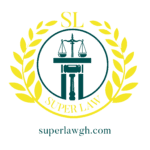Division: IN THE COURT OF APPEAL
Date: 18TH SEPTEMBER, 1959
Before: KORSAH C.J., VAN LARE J.A. AND GRAVILLE SHARP J.A.
JUDGMENT OF VAN LARE J.A.
Van Lare J A. delivered the judgment of the Court.
(His Lordship referred to the facts and proceeded:-)
The appeal was ably argued for the appellant, mainly on the ground that the conviction cannot be supported having regard to the evidence, particularly because there is no evidence available which the trial-judge and the assessors could have regarded as affording the necessary corroboration in law of the unsworn evidence of P. W. 2.
P.W.2 is a child of seven years, whom the trial – Judge did not find to appear to understand the nature of meaning of an oath, and who was allowed to give unsworn testimony. The law is that no person shall be convicted upon the uncorroborated evidence of a person who shall have given his evidence without oath or affirmation. This is so a fortiori in the case of a child of tender years.
We note, however, that the learned Judge, in considering this aspect of the matter, regarded the evidence of Boakye Adare and Akosua Akoto as corroborative of the child’s story. In this we differ, with respect, from the trial-Judge. The evidence of Boakye Adare is to the effect that the appellant was seen by him in the “area” of the crime, though where exactly the crime was committed that witness did not know. Further, there is no evidence given by him which (by time or distance) could connect the appellant with the crime. The evidence of Akosua Akoto, the appellant’s landlady, is to the effect that the appellant was not seen by her at home on the day in question until late in the evening, when he was seen to return home from work.
Although we are aware that circumstantial evidence may afford corroboration, this cannot in our view be so unless such circumstantial evidence points to no other conclusion than that the prisoner, and no one else, could possible have committed the offence which is under consideration. In other words, the chain of circumstances must without deviation connect the prisoner with the offence charged. We cannot, therefore regard the evidence of these two witnesses as satisfying the requirements of the law as to corroboration of the child’s evidence that the “N.T.” man who was seen by her to cut the deceased was the same man as the appellant.
We now come to the evidence of the child, the only person said to have witnessed the commission of the crime and the presence of the appellant in the act of committing it. We found the evidence of this child to be highly unsatisfactory, in the sense that it contains such inconsistencies and self-contradictions as to make it unreliable.
[p.305] of [1959] GLR 303
Learned Senior Crown Counsel conceded this point. We felt strongly that it would be highly dangerous to accept the child’s evidence. The question of corroboration, therefore, does not arise, and the case against the appellant is not strong enough even to call for an answer.
In the light of these matters, “the conclusion at which we have arrived” (to adopt the words of Lord Hewart in R. v. Wallace (23 Cr. App. R.32))” is that the case against the appellant, which we have carefully and anxiously discussed, was not proved with that certainty which is necessary to ‘justify a
verdict of guilty.”
DECISION
We therefore allowed the appeal, and quashed the conviction.
